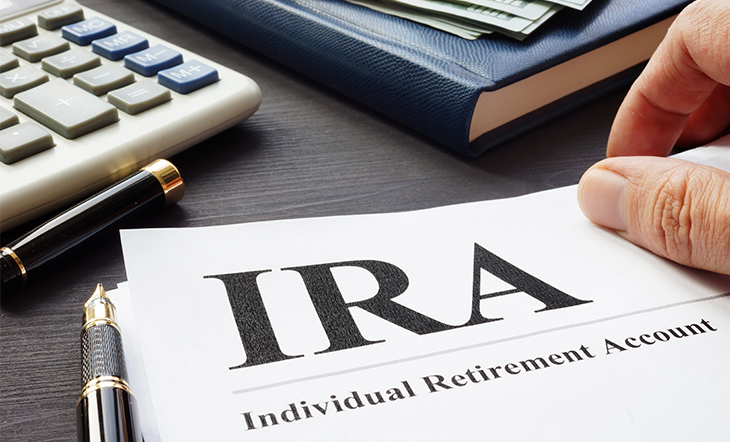A New Look at Stretch IRAs

An IRA – or an Independent Retirement Account – is an assuring way to save money through tax-deferred earnings. Depending on the plan you chose, an IRA can help you get a step closer to your intended savings strategy for retirement.
Out of the many ways in which IRAs help us save money, the most popular one is through estate planning. When you stretch an IRA to a non-spouse beneficiary, the tax-free growth continues for a longer time. This process is as also referred to as stretch IRAs. In simple words, it is a strategy to acquire extended life on an IRA for the heirs of the annuitant. Let us get to know more about this valuable process and its key benefits for retirees.
Table of Contents
Rules concerning Stretch IRAs
When you opt to transfer your estate wealth using a stretch IRA, you need to be aware of the rule governing its inheritance. The guidelines generally depend on the type of beneficiary and the age of the annuitant at the time of their demise. The spouse of the owner of the IRA usually has more benefits than other beneficiaries.
The beneficiary might also have a variety of choices to look forward to, if they are not mandated by required minimum distributions for withdrawing money from the IRA. Some of these rules include:
- If the owner does not withdraw the IRA account distribution, the heir can maintain the money for a period of 5 years after the demise of the owner.
- Special life expectancy is defined by the IRS tables. These numbers contribute towards the minimal amount of money to be withdrawn by a beneficiary.
- A beneficiary can acquire the entire balance in the IRA account.
- The spouse of the owner of an IRA has the power to transfer the account into their own account. In such a case, the spouse is treated as the permanent owner of the account. Such accounts also abide by all of the rules mentioned above.
Stretching an IRA the ideal way
The most preferred way to stretch your IRA is to name your spouse the primary beneficiary of your account. This allows them to take over the savings and transfer them into their account when you may no longer be with the family. A spouse can extract the maximum benefits from a stretch IRA. They can either take required minimum distributions as per their life expectancy or delay it till they reach the age of 70. After them, their heirs can take over the distribution and transfer the inherited benefits to the next generation. One may even opt for nominating a younger non-spouse beneficiary who can take over the distributions of the IRA.
Taxes surrounding Stretch IRAs
The inheritors of the stretch IRA are eligible to get a reduction in their income tax. The deduction accounts for the estate tax paid through the inherited IRA account. But there is a catch here. The amount you get from the IRA account is taxable, but since the owner of the account is liable to pay a federal estate tax anyway, the deductions will be accounted for.
Observing the recent trends in estate taxes, the exclusion amount is on a rise. In 2019, properties with a value of more than $11.4 million were subjected to tax. These numbers are considerably high as compared to the estimates in 2018, that stood at $11.18 million.
Legal Documentation for Stretch IRAs
Stretching an IRA needs immaculate ID proofs of the beneficiary, along with other government documents. If this step is not taken seriously, the account shifts to the estate. In such a scenario, the beneficiary will have to struggle through the complicated 5-year-rule for determining distributions from the account.
One important aspect of documentation is the form filling. A misleading or erroneous form can lead to many disasters. It is remarkable to know that the beneficiary form is simple, yet so important that it can lead to the loss of millions of dollars. IRA issues are long-lasting and do not get resolved so smoothly. Hence, one should fill the forms and deposit documents after double-checking all the liabilities. Giving time and attention to the entire process of documentation, can help you avoid all sorts of legal predicaments later.
Pros and Cons of Stretch IRAs
A stretch IRA can be beneficial for many reasons. Firstly, you can ensure financial safety for the next generation. It is also backed by benefits of lower tax payments, thanks to the small distributions made across a long tenure. Elongating the tax-free income provides an increased time frame for your assets to flourish. This further results in increased tax-free amounts for beneficiaries.
Stretch IRAs do have some shortcomings too. A major issue is that the strategy is vulnerable to any change in laws and regulations. In rare cases, if the beneficiary is not an adult, the owner needs to look for a guardian and set up a specific guardianship account, which demands more time and energy.
To sum it up
If you own significant assets in your IRA, stretching it in a wise manner is an option worth considering. The process does not only protect your financial investments but also keeps the legacy of your family intact. Furthermore, you can also choose the option of stretching the IRA to a trust which can include your spouse. This will help prevent IRA overspending and any unwise decisions made by the beneficiaries in the future.
If you are confused about the best way to stretch your IRA, help is not far away. Financial advisors can assist you with guidance that can provide decades of growth and income to your heirs.
A team of dedicated writers, editors and finance specialists sharing their insights, expertise and industry knowledge to help individuals live their best financial life and reach their personal financial goals. We believe that there is no place for fear in anyone's financial future and that each individual should have easy access to credible financial advice.
Related Article
9 min read
17 Sep 2025
How to craft the perfect financial plan for short, medium and long term goals
Financial planning is not a singular decision; it’s a series of well-timed, interconnected moves. Each move serves a different purpose, yet all must align with one overarching objective: securing your future on your terms. Short, medium, and long-term financial goals are the scaffolding for that future. They dictate how you allocate resources, manage risk, and […]
12 min read
05 Aug 2025
Deciding What to Do with Your 401(k) Plan When You Change Jobs
Changing jobs is often a moment of optimism and renewed purpose. New responsibilities. Better compensation. Maybe even a new city. But amid the excitement of offer letters and onboarding checklists, there’s one often-overlooked question that can quietly shape your retirement future: What happens to your 401(k) when you change jobs? You’ve spent years contributing, watching […]
11 min read
22 Jul 2025
How to Rollover your 401(k) in 5 Easy Steps
Are you thinking about rolling over your 401(k)? People usually arrive at this conclusion if they have changed jobs or just want better control over their retirement funds. A 401(k) rollover refers to transferring money from one retirement account, such as an old employer’s 401(k), into a new 401(k) or an Individual Retirement Account (IRA). […]
10 min read
08 Jul 2025
Things to Know If You Are Planning an Early Withdrawal from Your Roth IRA
Are you thinking about cashing in on your Roth Individual Retirement Account (IRA) early? Before you make the move, it is important to understand what you are really signing up for and how this one decision affects multiple things. First off, let’s clear up some confusion. There are several types of IRAs, such as Traditional, […]
More From Author
14 min read
23 Jan 2024
How to Determine If Your Financial Advisor Is Doing a Good Job Each Year
The decision to hire a financial advisor is a prudent move. Seeking professional advice can provide valuable insights and a roadmap to achieve your financial goals with strategic planning. But the world of financial advice is crowded. While some advisors bring qualifications, expertise, and a commitment to your financial well-being, others may fall short of […]
4 min read
30 Oct 2023
How to prepare for a meeting with your Financial Advisor
What do you do before you visit a doctor? Understand your condition, prepare for all the questions that the doctor would ask, ensure all your test reports and medical history documents are in order and so on. Preparation is a must even before you visit a financial advisor. Table of Contents7 Things to do to […]
3 min read
26 Jul 2019
Best Retirement Calculators to plan Retirement
It is said that a goal without a plan is just a wish. This holds true even for retirement planning. You dream of a peaceful retired life. To achieve that you must plan for your golden years well in time. Various retirement tools make your task easier. For example, a retirement calculator helps you calculate […]
4 min read
23 Mar 2020
How to get rid of Money Anxiety?
Is money anxiety even a thing? Yes, it is! Money anxiety is something we all have dealt with or are likely to deal with at some point in our life. Sometimes, you may not even know that you are money anxious unless you take note of it. But the good part here is that money […]

Find & Compare Top Financial
Advisors in your area
Get Started
Popular Posts
Categories
- Business Finance (2)
- Education Planning (31)
- Estate Planning (31)
- Financial Advisor (1)
- Financial Advisor Guide (55)
- Financial Planning (138)
- Investment Management (99)
- Personal Finance (15)
- Portfolio Management (1)
- Retirement (30)
- Retirement Healthcare (1)
- Retirement Planning (109)
- Retirement Plans (1)
- Uncategorized (4)
Subscribe to our
newsletter & get helpful
financial tips.
The blog articles on this website are provided for general educational and informational purposes only, and no content included is intended to be used as financial or legal advice. A professional financial advisor should be consulted prior to making any investment decisions. Each person’s financial situation is unique, and your advisor would be able to provide you with the financial information and advice related to your financial situation.



